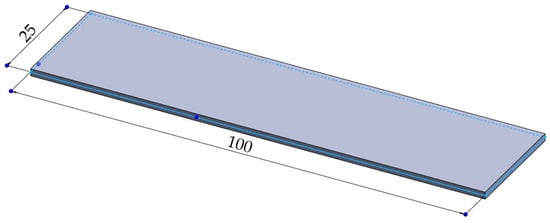- Communication
Adherend-Limited Failure in LCD Print-to-Bond Woven Fabric-Photopolymer Joints: A Process Efficiency Communication
- Ivan Grgić,
- Mirko Karakašić and
- Pejo Konjatić
- + 1 author
Additive manufacturing via LCD vat photopolymerisation enables direct bonding of photopolymer to textile substrates, but optimal processing parameters remain unclear. A 3 × 3 factorial design investigated the effects of layer thickness (0.01, 0.025, 0.05 mm) and UV exposure time (40, 80, 120 s) on the single-lap shear strength of woven fabric-photopolymer joints (65% polyester/35% cotton) using a novel pause-and-bond methodology, following the EN ISO 4587:2003 standard. Five replicate specimens per condition yielded 45 samples for mechanical testing. All specimens (45/45) exhibited adherend-limited failure within the textile substrate rather than at the polymer-textile interface, yielding consistent shear strengths of 1.38 ± 0.04 MPa (range: 1.30–1.45 MPa). Two-way ANOVA revealed no significant parametric effects (p > 0.05), indicating that interfacial bond strength consistently exceeded textile cohesive strength across all parameter combinations. The minimum resource-efficient condition (0.01 mm/40 s) achieves equivalent performance to higher-parameter combinations, enabling substantial process optimisation for textile-integrated photopolymer sandwich structures while reducing material and processing time requirements.
24 December 2025





